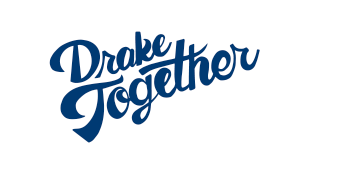Skip Sub Menu
Compliance (MJ)
- Knowledge and Understanding of substantive law: Demonstrate ability to locate and comprehend state and federal statutes and regulations.
- Knowledge and Understanding of substantive law: Demonstrate familiarity with state and federal agencies.
- Knowledge and Understanding of substantive law: Demonstrate ability to research, understand, and stay up to date on regulatory changes.
- Knowledge and Understanding of substantive law: Demonstrate familiarity with locating, analyzing, and staying current with existing relevant case authority.
- Knowledge and understanding of procedural law: Demonstrate knowledge and understanding of the appropriate procedures for participating in agency rule-making at the State and Federal levels.
- Knowledge and understanding of procedural law: Demonstrate knowledge and understanding of the appropriate procedures for prosecuting and responding to agency enforcement actions.
- Knowledge and understanding of procedural law: Demonstrate knowledge and understanding of the appropriate procedures for participating in agency judicial proceedings, including proceedings before administrative law judges.
- Compliance and Risk Management: Demonstrate ability to ensure compliance with relevant laws and regulations.
- Compliance and Risk Management: Analyze legal issues relating to compliance structures, risk processes, and roles and responsibilities within organizations.
- Compliance and Risk Management: Apply risk management skills to identify, measure, assess, reduce, and manage legal and business risks in the workplace.
- Compliance and Risk Management: Plan, implement, and evaluate effectiveness of compliance programs.
- Compliance and Risk Management: Formulate conceptual frameworks for future compliance strategies.
- Compliance and Risk Management: Synthesize knowledge and skills of compliance and legal systems to proactively manage risk.
- Professionalism and Ethics: Analyze ways in which organizational policies and procedures can influence ethical business conduct.
- Professionalism and Ethics: Articulate and challenge a tradition, assumption or prevailing business practice by raising and examining relevant ethical perspectives.
- Professionalism and Ethics: Distinguish between activities and judgments particularly subject to ethical issues from those that are less subject to ethical issues.
- Professionalism and Ethics: Use leadership and communication skills to effectively interact with a diverse range of stakeholders.
- Professionalism and Ethics: Distinguish between legal and ethical problems and apply various ethics theories to business situations.
Law (JD)
- Analysis and Problem Solving: Students will identify relevant legal issues and understand, interpret, and apply statutes, case law, and, where applicable, policy. They will engage in critical thinking to predict outcomes and recommend appropriate action.
- Written Communication: Students will write documents that are clear, concise, well-reasoned, organized, professional in tone, appropriate to the audience and circumstance, and, if appropriate, contain proper citation to authority.
- Oral Communication: Students will speak in a clear, concise, well-reasoned, organized, and professional manner that is appropriate to the audience and circumstance.
- Lawyer Practice Skills: Students will demonstrate the professional skills needed for competent participation as a member of the legal profession. These skills can include any of the following: interviewing, document drafting, negotiation, conflict resolution, counseling, pre-trial preparation, fact development and analysis, oral advocacy, trial representation, appellate advocacy, or organization and management of legal work.
- Legal Research: Students will identify the major primary and secondary legal sources both in print and online; understand the appropriate use of each; and independently construct and apply an effective research strategy for locating, analyzing, and organizing relevant resources that support the resolution of a given legal question.
- Professionalism and Ethics: Students will identify ethical concerns in a variety of situations, determine the applicable Rules of Professional Responsibility, and apply the rules to ensure compliance with all professional and ethical standards.
University Calendar 
November 20, 2024

